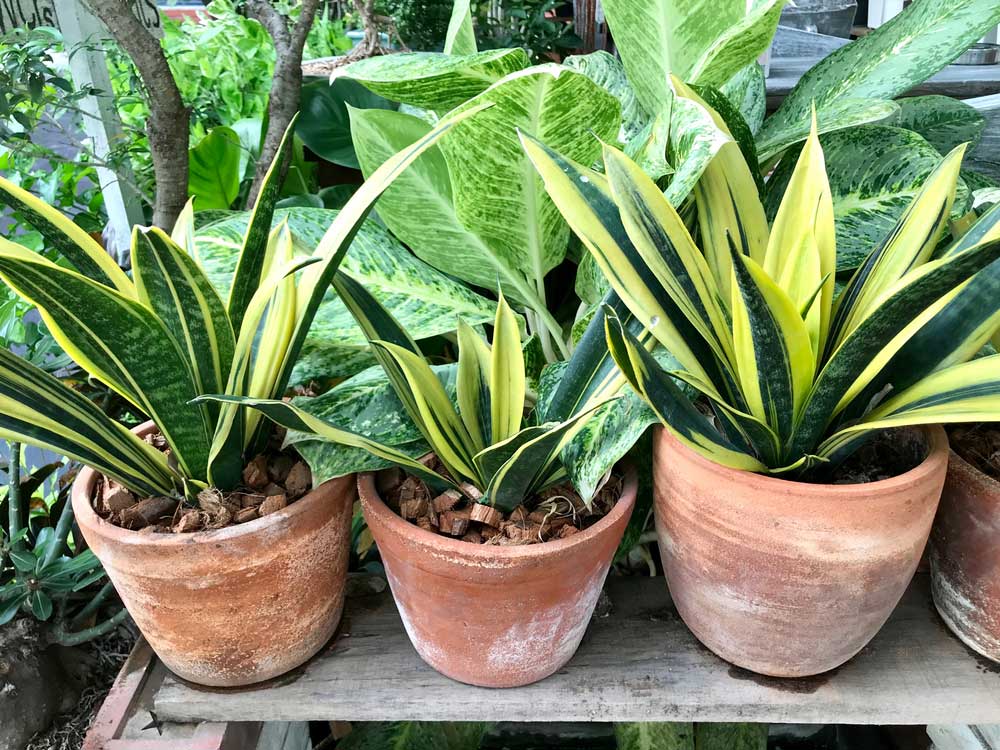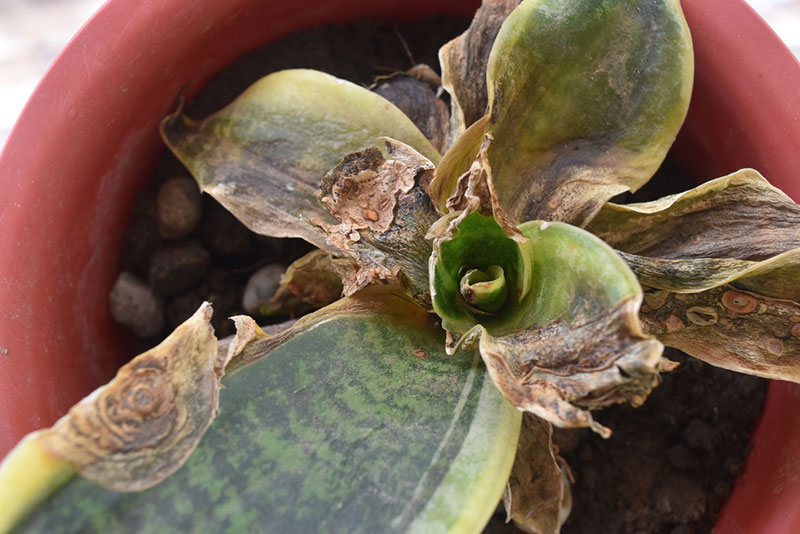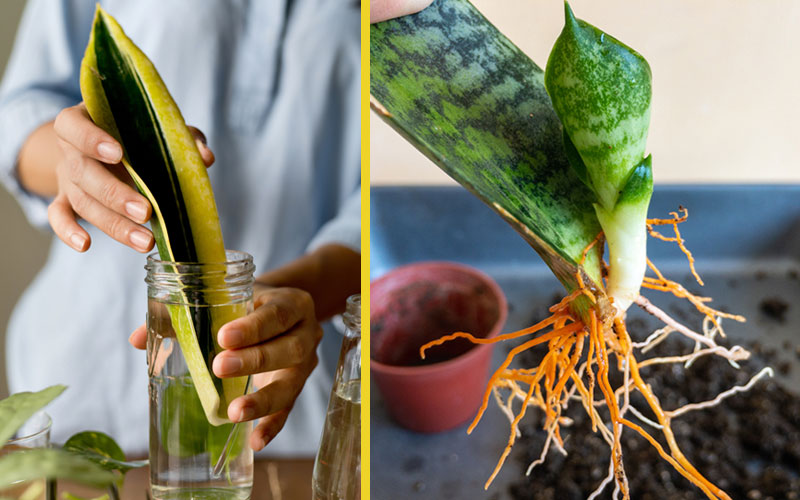
Sansevierias or the snake plant or mother-in-law’s tongue as it is often called, are available in over 60 different species with different shapes, heights, and variegated leaves as well.
These are some of the easiest houseplants to grow and many homes have them because of this fact.
What Do Snake Plants Look Like?
Depending on the variety of your snake plant, it can be anywhere from 6 inches to 3 feet wide and the dwarf varieties grow from 1 to 3 feet tall. The standard varieties can grow from 3 to 8 feet tall. The foliage is green or it can have yellow, gray, or silver variations or edges of gold or cream on the leaves. This is a very low-maintenance plant that is drought tolerant, making it an ideal houseplant for beginning gardeners who may forget to water their plants often enough.
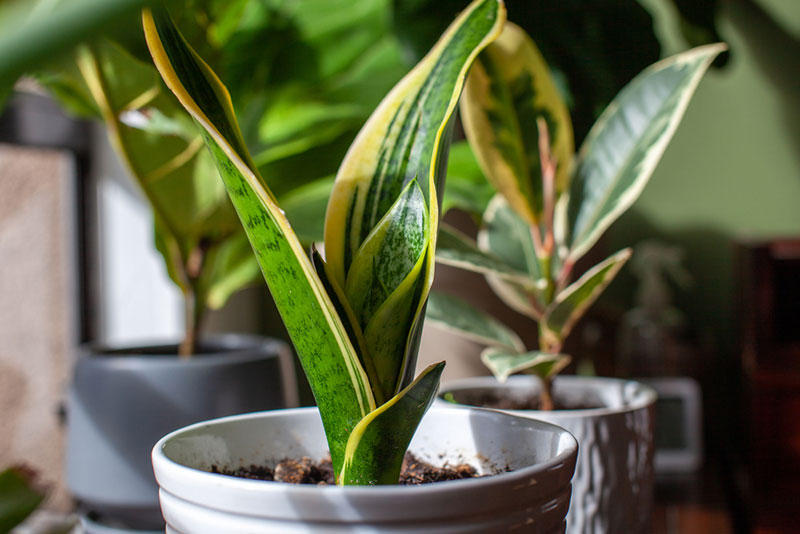
The snake plant doesn’t have a stem, but rather the leaves have roots in the soil and they stand up straight with a very thick and tough texture. Since there are no branches, the snake plant is ideal for a planter that you put on the floor at your home.
Snake plants can be propagated by the leaves, leaf cuttings, offsets, separation, or by seeds.
The best method is to propagate your snake plant in water.
How to Propagate Snake Plants?
Choosing Your Leaves to Propagate
The great news is that you can propagate copies of your snake plant to create more of them from leaf portions–so you don’t even need a whole leaf to make several baby snake plants. You should select a very healthy-looking mother plant to start with.
Sterilize your garden shears with alcohol by merely wiping the blades off with alcohol on a paper towel. This will prevent any diseases that could be transferred to either the mother plant or the leaves that you cut. You can cut whole leaves from the bottom of the soil for long cuttings.
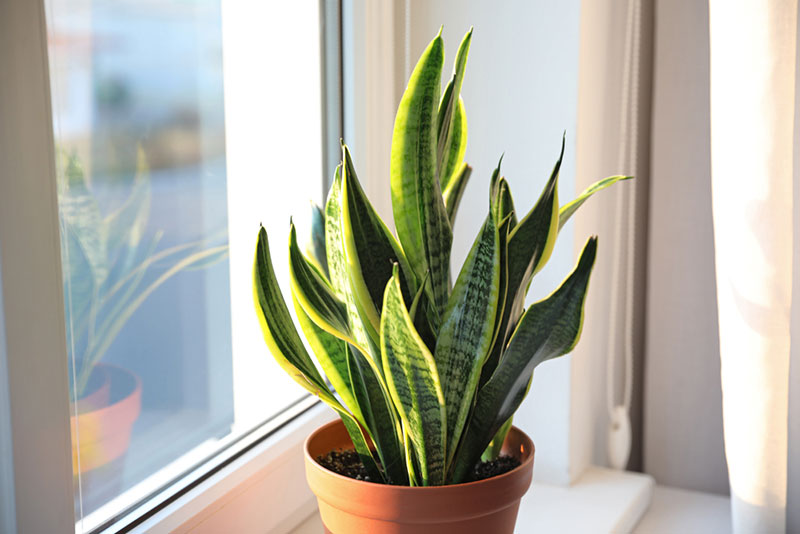
You can either cut one leaf for each new plant or cut one leaf into sections for multiple copies of your snake plant. Set your cuttings down on a flat surface and keep in mind which is the bottom end of the cutting. This is the end that the new roots will grow from. You can then cut a leaf into sections that are 2 to 3 inches long. Keep the pieces in the same orientation on the flat surface so you know which is the bottom of each section.
Choose a Container For Your Water Propagation
You can use any type of non-porous container for your propagation, including a glass, coffee mug, bowl, or an old plastic water bottle. In the case of a water bottle, you should cut the top off at the shoulders of the bottle where it reduces in size towards the top of the bottle.
Pour some room temperature water from the tap or drinking water into your container of choice at a level of about one inch deep. If you have very hard water at your home, use bottled drinking water instead, but don’t choose distilled water as this process neutralizes the pH of water. Also, don’t use tap water if you have a water softener because the salt in it to treat the water can be toxic to plants.
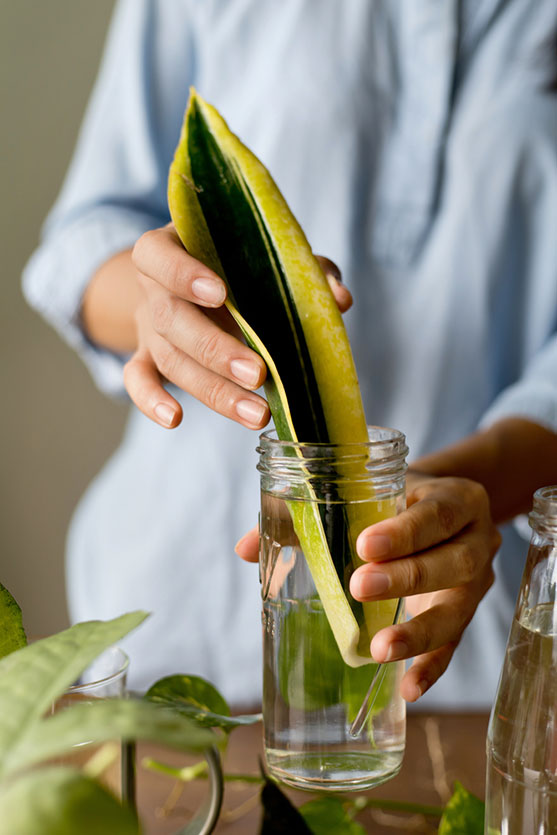
Cut a “V” shape at the bottom of your leaf or the bottom of all the leaf sections to help it to grow roots better. This allows only the two edges to touch the bottom of the container, so the roots will grow long in the “V” part of your cuttings.
Place your container in a filtered light area for the best results. It shouldn’t be in direct sunlight. You can close your curtains on a window and set your container on the windowsill or on a table or surface that has LED or fluorescent lighting above it, wherever you decide to put it, make sure it’s inside and not outside.
Every 3 to 4 days, you should pour the water out and put fresh water in the container.
You will notice after 3 to 4 weeks that there are very tiny roots growing on your new snake plants.
Keep changing the water every 3 to 4 days until the roots are at least 2 inches long. This will take about 2 to 3 months.
Transferring Your Snake Plants to Soil
Snake plants, while simple to propagate and grow, don’t tolerate “wet feet”, meaning that the roots can’t sit in soil that is too moist or they will rot.
You can choose to use a succulent growing medium from a nursery or you can make your own growing medium by mixing 40% perlite and 60% potting soil for a very well-draining mixture.
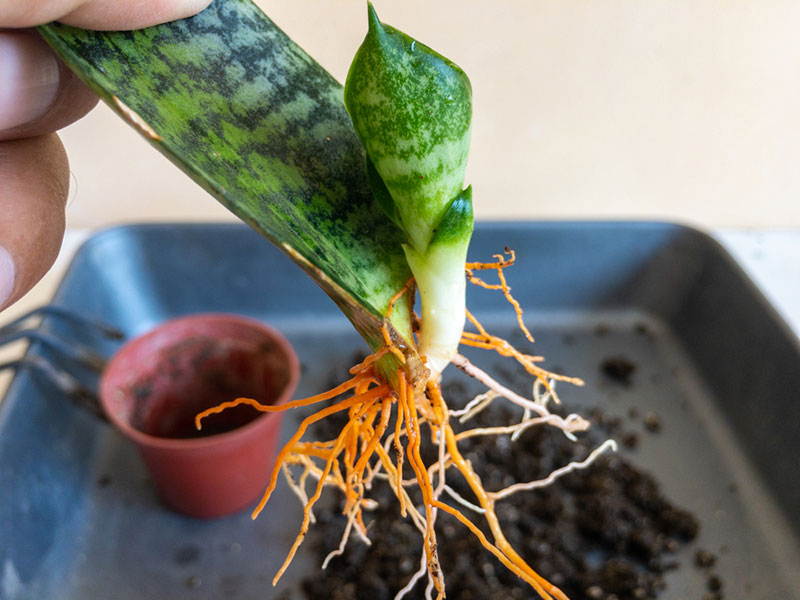
Your pot of choice must have a drainage hole in the bottom.
Fill the pot with your soil and place your cuttings in it with several inches underneath the soil, in the case of whole leaf cuttings, or at least one inch of the leaf portions if you go that route. Place your pot in the same area that you had it in indirect sunlight.
Wait about 3 days before you water the cuttings for the first time. This allows them to heal from the cutting process and prevents rot.
You can lightly water them with a mister every few days. In about 4 to 5 weeks, you will see new green plant growth at the top of your new snake plants.
Snake Plant Propagation FAQs
1. How long does it take for snake plant cuttings to root in water?
It takes 3 to 4 weeks to see roots on your cuttings
2. When should you plant snake plants in the soil after propagating in water?
When your cuttings have roots at least 2 inches long at about 3 to 4 months in the water, you can plant them in soil.
3. Why is my snake plant not rooting in water?
Using bottled drinking water will help your snake plant to root and be patient as it does take some time.
4. How do I transfer a plant cutting from water to soil?
Place your cuttings in well-draining soil and put them in indirect sunlight for the best results.
5. Why is my variegated snake plant growing only in a green color without the variegation?
Most snake plants that are variegated in color are from a mutation and they are a chimera. When propagating these leaves, the new plants will only be green. However, if you want variegated new plants, you can separate the plant by division and choose a long leaf with roots, then repot it.





